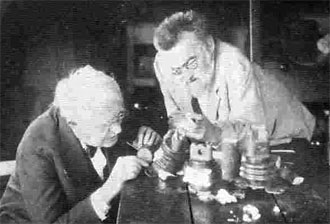The Idea of Progress in 19th-Century America
Thursday, February 18, 2010
7:00 p.m.–8:30 p.m. (EST)

Leader
Associate Professor of History
Northwestern University
National Humanities Center Fellow
About the Seminar
The United States marked its 100th anniversary in 1876 with the Centennial Exhibition in Philadelphia, a birthday party that celebrated mechanical progress. But in late nineteenth-century America, progress did not simply mean generating more horsepower. It meant cleaning up cities, reforming government, improving the efficiency of workers, and professionalizing endeavors like playing baseball and studying history. The idea of progress reached into every corner of American life. How did Americans define progress at that time? How did progress manifest itself? And how did it shape America?

Enter Moodle Forum
Assigned Readings
To incorporate seminar texts into your teaching, we offer the National Humanities Center's Primary Document Application Form.- William Graham Sumner, What the Social Classes Owe to Each Other, 1883, excerpts
- Frederick Winslow Taylor, The Principles of Scientific Management, 1910, Ch. 2, excerpts
- Christine Frederick, The New Housekeeping, 1913, excerpts
- Theodore Dreiser, “A Photographic Talk with Edison,” Success, February 1898, excerpts
- Thomas Edison, Observation, 13 Feb. 1921, with photograph of Edison and Charles Steinmetz, n.d.
- Henry Adams, “Chicago,” Ch. 22 in The Education of Henry Adams, 1907
- The Dream City: A Portfolio of Photographic Views of the World’s Columbian Exposition, 1894
Presentation
PowerPoint: 2.12 MBOnline Evaluation
Seminar Recording
Download Recording (You will need to install the WebEx ARF player, available at download, to playback the recording.)
